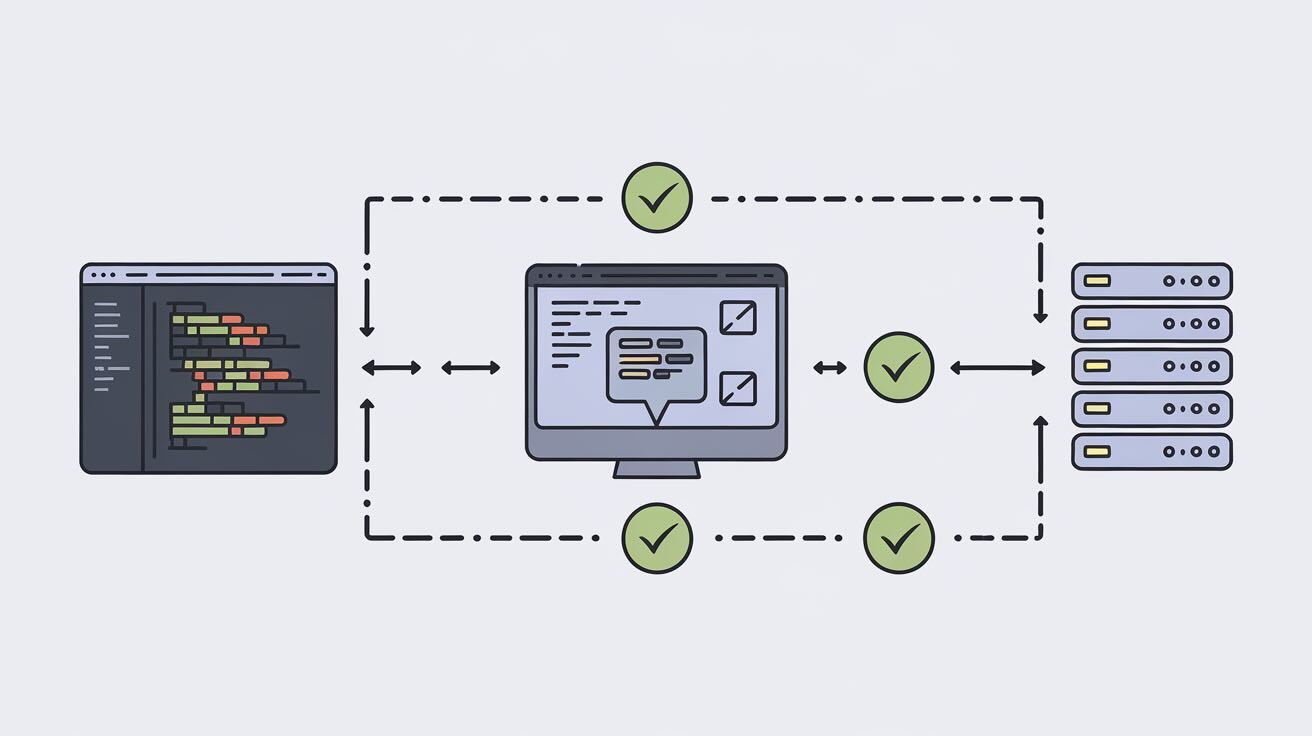In today's fast-paced software development world, delivering value to customers quickly and efficiently is paramount. One of the most powerful ways to achieve this is through Continuous Deployment (CD). But what exactly is it, and how can it benefit your organization? Let's dive in.
Understanding Continuous Deployment
Continuous Deployment is an advanced DevOps practice where code changes are automatically deployed to production once they pass automated testing. Unlike traditional deployment methods that rely on manual interventions, CD creates a seamless pipeline that moves code from development to production automatically and safely.
The Key Benefits
1. Faster Time to Market
- Eliminate manual deployment steps
- Reduce the time between writing code and getting it to users
- Enable rapid response to customer feedback
2. Improved Code Quality
- Enforce consistent testing before deployment
- Catch issues early through automated testing
- Reduce human error in the deployment process
3. Enhanced Developer Productivity
- Free up developer time from manual deployment tasks
- Enable focus on writing code rather than managing releases
- Create consistent, repeatable deployment processes
How Continuous Deployment Works
The CD pipeline typically follows these stages:
1. Code Commit
Developers push their code changes to a version control system.
2. Build
The application is automatically compiled and built.
3. Test
Automated tests run to verify the code's functionality:
- Unit tests
- Integration tests
- Security scans
- Performance tests
4. Deploy
If all tests pass, the code is automatically deployed to production.
5. Monitor
The application is monitored for any issues post-deployment.
Common Challenges and Solutions
Challenges:
- Test Coverage
- _Challenge_ : Ensuring comprehensive test coverage
- _Solution_ : Implement test-driven development (TDD) and set minimum coverage requirements
- Environment Consistency
- _Challenge_ : Maintaining consistent environments
- _Solution_ : Use infrastructure as code and containerisation, or some way to repeat your environment construction, like GitOps, IaC, etc.
- Database Changes
- _Challenge_ : Managing database migrations
- _Solution_ : Implement automated database migration tools and versioning, for example, using SSH Commands on DeployHQ
- Rollback Strategy
- _Challenge_ : Handling failed deployments
- _Solution_ : Implement automated rollback procedures and feature flags, again, provided by DeployHQ out of the box.
Getting Started with Continuous Deployment
1. Start with Continuous Integration
Ensure you have a solid CI foundation before implementing CD.
2. Implement Comprehensive Testing
Develop a robust automated testing strategy to catch issues before they reach production.
3. Use the Right Tools
Choose appropriate tools for your pipeline, such as:
- Version control systems
- Automated testing frameworks
- Deployment automation tools
- Monitoring solutions
4. Foster the Right Culture
Encourage collaboration between development and operations teams, and embrace automation.
Continuous Deployment vs. Continuous Delivery
While these terms are often used interchangeably, they represent different approaches to software deployment:
Continuous Delivery:
- Code changes are automatically built and tested
- Deployments require manual approval
- Releases can be done at any time
- Provides more control over when features go live
- Better suited for businesses requiring release approval processes
Continuous Deployment:
- Fully automated process from code commit to production
- No manual intervention required
- Every change that passes tests goes to production
- Faster time to market
- Requires robust testing and monitoring
Continuous Deployment vs. Continuous Integration
These practices serve different purposes in the software development lifecycle:
Continuous Integration:
- Focuses on code integration and testing
- Automatically builds and tests code changes
- Ensures code quality at the development stage
- Stops at the build and test phase
- Foundation for both Continuous Delivery and Deployment
Continuous Deployment:
- Builds upon Continuous Integration
- Handles the entire pipeline through to production
- Includes deployment automation
- Requires more sophisticated testing and monitoring
- Represents the complete automation of the delivery process
Conclusion
Continuous Deployment represents the pinnacle of DevOps automation, enabling organizations to deliver value to customers faster and more reliably than ever before. While implementing CD requires investment in tools, processes, and culture, the benefits of faster delivery, improved quality, and increased developer productivity make it well worth the effort.
Ready to start your Continuous Deployment journey? DeployHQ can help you automate your deployments and build a robust CD pipeline that meets your organization's needs.
Start your free trial with DeployHQ today and experience the power of automated deployments.
This post is part of our "What Is" series, helping developers understand key concepts and methodologies in modern software development.
